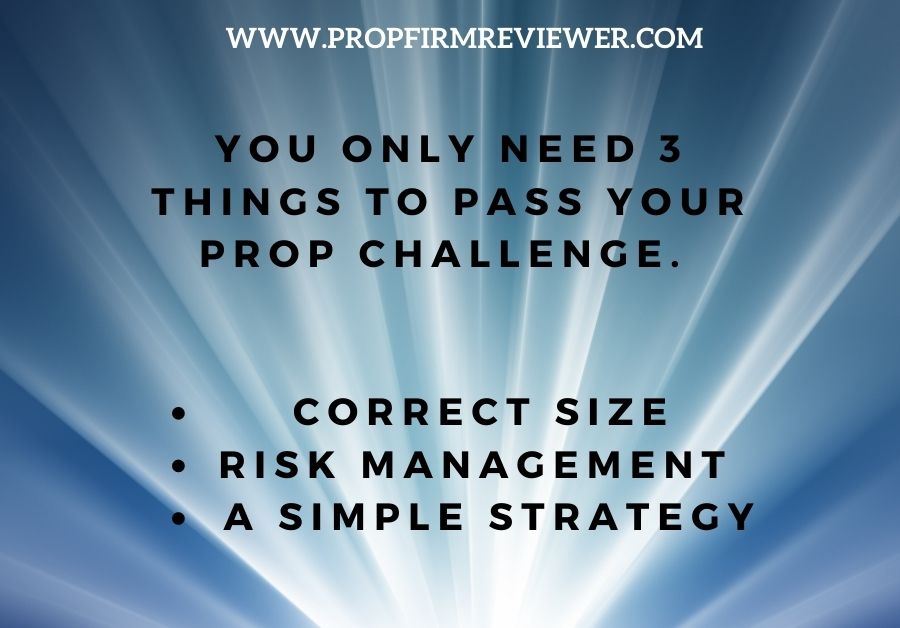Hitting Singles, Not Home Runs: A Simple Guide to Pass Your Prop Firm Challenge

You know the feeling when you’re standing at the plate, ready to swing for the fences, dreaming of that glorious home run? Well, trading doesn’t have to be that complex and stressful. Just like in baseball, sometimes, all it takes is hitting singles consistently. I’ve been there myself, and I want to share with you a simple guide to pass your prop firm challenge without overcomplicating things.
Section 1: Base Hits Over Home Runs
In this section, I’ll explain why taking small, consistent gains (base hits) can be more effective and less stressful than chasing huge wins (home runs). I’ll include real-world examples and simple strategies that anyone can follow.
Section 2: The Power of Micros
Micros might not seem like a big deal, but they can be your key to success. Here, I’ll break down how using micros can allow you to tier out, leaving a runner, and how it can help you achieve your targets more comfortably.
Section 3: Setting Realistic Goals
With around 20 trading days in most months, a $75-a-day target can get you there! I’ll walk you through the math and show you how achievable this target can be with consistency.
Section 4: Strategies that Work
This section will discuss two simple yet powerful strategies:
- Supply and Demand/Moving Cross-Over Strategy: This isn’t rocket science! Find where the price holds, get in, get out. I’ll explain how.
- Looking for Rejection Points: If a price was rejected twice recently, chances are it’ll be rejected again. I’ll guide you on how to use this strategy effectively.
Section 5: Fast Action – Both Entry and Exit
Here’s where the rubber meets the road! We’ll delve into the importance of stopping out fast when you’re wrong and taking profit quickly when you’re right. It’s a lesson I learned the hard way, but it’s helped me ever since.
You know that thrilling moment when you’re up to bat, eyes fixed on the pitcher, every muscle tensed to knock the ball out of the park? The crowd’s silent anticipation is almost palpable. But wait a minute, let’s put the bat down and step out of the batter’s box for a moment. Trading doesn’t have to be a grand slam event with every swing. In fact, I’ve found that overcomplicating things can be your downfall, especially when it comes to prop firm challenges.
Imagine, instead of swinging for the fences, taking those consistent base hits. Doesn’t that feel more controlled, more achievable? I’ve been there myself, dreaming of those home runs, only to realize that what really brought me success were the smaller, well-timed plays. In this guide, I’m going to show you how to take the stress out of trading, simplifying your approach to passing your prop firm challenge, and making it to your first payout. No complex strategies with too many rules, just simple, effective hits that get you around the bases and back home. Let’s dive into the game!
Base Hits Over Home Runs: Your Path to Success
You remember learning to ride a bike? You didn’t hop on and win the Tour de France on day one. It was a gradual process, a wobbly start followed by consistent progress. The same applies to trading, especially when you’re tackling a prop firm challenge.
You see, the allure of hitting that financial home run can be intoxicating. That one big trade that’ll catapult you to success. But, alas, it’s often as elusive as a unicorn wearing sunglasses.
I’ve been in those shoes, swinging for the fences, only to strike out. And that’s when I learned a valuable lesson: consistency trumps complexity.
The Base Hit Approach
Imagine hitting single after single, those small but consistent profits that keep adding up. Doesn’t sound as glamorous as a home run, but trust me, it adds up! And best of all, it doesn’t require a labyrinthine strategy that would make Sherlock Holmes scratch his head.
Here’s what the base hit approach involves:
- Taking Several Small Trades: Instead of putting all your eggs in one basket, diversify. Small wins accumulate and can often outpace a risky home run attempt.
- Playing it Safe: In baseball, a base hit is a smart, controlled play. In trading, it means knowing your risk and managing it wisely.
- Avoiding the Temptation of Complexity: Keep it simple. Like making pancakes on a Sunday morning, no need for the five-star chef moves. Look for straightforward opportunities and act on them.
The base hit approach is like having a good breakfast every day. It may not be as exciting as a lavish dinner party, but it sustains you and keeps you going.
To wrap this section up, think of trading as a marathon, not a sprint. Those home runs might look dazzling, but they come with high risks. Consistent base hits, on the other hand, can take you to your goal without the drama. I know because I’ve walked (and sometimes stumbled) down that path. But guess what? It led me exactly where I wanted to go. Why not give it a try yourself?
The Power of Micros: Small Steps to Big Success
Ever tried to move a heavy couch all by yourself? Not exactly a walk in the park, right? Now, imagine moving it bit by bit, inch by inch. Suddenly, that daunting task becomes manageable. That’s the magic of micros in the trading world.
I remember the first time I discovered the potential of micros. It was like finding an extra gear in a car that I’d been driving for years. Suddenly, I could maneuver more easily, control my risk better, and reach my destination more comfortably.
What Are Micros, and Why Do They Matter?
Micros are like the appetizers of the trading menu, smaller portions that allow you to taste different flavors without overindulging. They let you:
- Tier Out, Leaving a Runner: You know the feeling when you’re at a buffet and can’t decide what to eat? With micros, you don’t have to. Take a bit of this, a bit of that, and enjoy the meal without overcommitting.
- Minimize Risk: Using micros is like putting training wheels on a bike. It helps you keep your balance, learn the ropes, and gradually gain confidence without the fear of a nasty fall.
- Achieve Targets Comfortably: If the thought of making large trades makes you as nervous as a cat in a room full of rocking chairs, micros are your friends. Achieve your targets in smaller, manageable increments. It’s like climbing a mountain one step at a time.
Micros in Action: Your Key to Prop Firm Challenges
Micros are particularly handy when taking up prop firm challenges. With a $25K account, you only need small, consistent gains to pass the challenge. Micros make this process less daunting and more doable. A full-sized ES contract moves $12.50 at a tick. You’re at what you should be risking in just a few ticks. Micros, at 1/10th that size, allow you to let a trade breathe a little, whereas Mini’s require a small account to enter with perfect precision.
So now that you have an understanding of micros, think of them as your trading toolkit’s Swiss Army knife. They might look small and unassuming, but they’re packed with functionality and can be a game-changer.
Let’s put it this way: You wouldn’t use a sledgehammer to hang a picture on the wall, right? Micros give you the precision and control you need without unnecessary force. Give them a shot, and you might find that they turn your trading journey from a rough ride into a smooth sail.
Setting Realistic Goals: Your $75-a-Day Pathway
Do you remember the first time you set up a savings jar, tossing in a few coins every day? It didn’t seem like much at the time, but as the days turned into weeks and then months, that jar began to fill. Before you knew it, you had enough for that thing you’d been eyeing. It’s a simple concept, but in the world of trading, it can be your ticket to success.
Setting a target of $75 a day might sound like the financial equivalent of watching paint dry, but stick with me here. I’ve been down this road, and I want to show you how it can lead to passing most 25K account challenges.
The Magic of $75
The number itself might not make you jump out of your seat with excitement, but here’s why it’s a game-changer:
- It’s Achievable: Making $75 a day is like walking a mile. It might take a bit of effort, but it’s far from impossible. You can do it without breaking a sweat.
- It Adds Up: With around 20 trading days in most months, a little math shows that $75 a day gets you to that $1,500 monthly target. Suddenly, that unassuming number starts to look pretty attractive, doesn’t it?
- It Keeps You Grounded: By focusing on a manageable daily target, you avoid the stress and risk associated with aiming too high. It’s like choosing a comfortable pair of shoes for a long walk – it makes the journey pleasant.
- Using Micros $75 is attainable in several ways: At $1.25 a tick, you need 60 ticks to get to $75. How do you want to do it? 5 Contracts, for 12 ticks? 5 contracts for 6 ticks over 2 trades? You choose a plan and remember the key is consistency.
Making It Work for You
Here’s the beautiful part: this approach doesn’t require you to be the Warren Buffett of your generation. You just need to:
- Take Several Small Trades: Think of them as those coins in the savings jar, each contributing to your goal.
- Use Simple Strategies: No need to dive into the deep end of complexity. Stick to what works, like supply and demand or moving cross-over strategies.
Remember that garden you tried to grow once? Planting a seed and watering it every day led to a flourishing plant. It wasn’t about dumping a bucket of water on it once; it was the consistent care that made it thrive.
So let’s wrap up this section with a thought: passing your prop firm challenge doesn’t have to be a Herculean task. It can be as simple and rewarding as nurturing a garden or filling a savings jar. One small step at a time, and you’ll get there. Trust me, I did it, and so can you!
Strategies that Work
Bounce or Rejection Points: Long and Short Plays in Perfect Harmony
Picture yourself at a crossroads. One path leads you to the hills, the other to the valley. Both destinations have their charm, and the best part? You can explore them both, just as in trading you can play both long and short.
I’ve been down both roads, and I want to guide you through the beautiful dance of bouncing and rejecting points in the market. It’s like a tango where you can lead or follow, depending on the music of the market.
Long Plays: Catching the Upward Breeze
When we talk about long plays, it’s all about finding a good place to get in where the price is holding firm. Here’s how you can make it work:
- Look for Support: Find that spot where price has bounced before. It’s like finding a sturdy branch to sit on – it’s held before, and it’ll likely hold again.
- Watch for Signals: Keep an eye out for signs that the price is about to climb. Think of it as seeing the sun peek through the clouds, a hint of good weather ahead.
- Be Quick to React: If you’re wrong, stop out fast. It’s like touching a hot stove – the quicker you pull away, the less it burns.
Short Plays: Riding the Downhill Slope
Short plays are the flip side of the coin, focusing on places where price has rejected twice or more recently. Here’s your guide to nailing those short opportunities:
- Find the Resistance: Spot the level where price was knocked back previously. Think of it as a low ceiling – you don’t want to jump too high, or you’ll bump your head.
- Watch for Rejection Signs: Look for clues that the price is about to fall. It’s like noticing the leaves turning in autumn, signaling the change of seasons.
- Again, Be Quick to React: If the trade goes against you, exit promptly. Better to admit a mistake quickly than to dig yourself into a hole.
Embracing Retracement Moves
Here’s the cherry on top: since you’re not looking for massive moves, you can often make what you need during simple retracement moves. It’s like finding a shortcut on your daily commute. Who wouldn’t want to get to their destination faster and with less hassle?
Bouncing or rejecting points offer a balanced approach to both long and short plays. They don’t require you to be a wizard or predict the future, just to recognize patterns and react wisely. It’s as approachable as cooking your favorite meal; you’ve done it before, and you can do it again.
And remember, the journey to trading success doesn’t have to be a steep climb up a mountain. Sometimes, it’s as easy as a gentle walk in the park. Embrace the long and short of it, and you might just find yourself enjoying the scenery along the way. I’ve done it, and I can assure you, the view is fantastic!
Moving Average Cross: The Dance of the 9 EMA/VWAP and 13/48 Intraday
Have you ever seen a pair of skilled dancers glide across the floor, each movement perfectly timed, each step flawlessly executed? The moving average cross in trading, specifically the 9 EMA/VWAP and the 13/48 intraday, is like watching that dance unfold on your trading charts. And the best part? You don’t need to be a professional dancer to join in.
The 9 EMA/VWAP Cross: Your Day Trading Waltz
This crossover strategy is like a waltz in the world of day trading. It’s graceful, elegant, and often highly effective. Here’s how to dance to its tune:
- Find the Cross: Watch for the moment when the 9 EMA crosses the VWAP (Volume Weighted Average Price). It’s like hearing the starting notes of a song, signaling the time to move.
- Choose Your Direction: If the 9 EMA is above the VWAP, think long. If below, think short. It’s like knowing whether to step forward or backward in the dance.
- Act Swiftly: Like catching a partner’s hand at the right moment, timing is key. Enter or exit the trade with precision.
The 13/48 Intraday Cross: Your Upbeat Swing Dance
The 13/48 intraday strategy is your more energetic swing dance. It’s fun, lively, and can be highly rewarding. Here’s how you can groove to its rhythm:
- Spot the Cross: Look for the 13-period moving average crossing the 48-period one. Think of it as spotting your partner across the room, ready to dance.
- Determine Your Play: If the 13 is above the 48, you’re looking to go long; if below, you’re going short. It’s like choosing your dance steps.
- React with Confidence: Don’t hesitate when the moment is right. Take the trade with the same assurance as stepping onto the dance floor.
Joining the Dance without Tripping Over Your Feet
These crossover strategies might sound complex, like learning a new dance, but they’re more accessible than you might think. It’s all about practice, timing, and a bit of rhythm.
So now that you have an understanding of these moving average crosses, why not give them a whirl? You don’t need to be a trading Fred Astaire or Ginger Rogers. Just follow the beat, watch for the signs, and soon enough, you might find yourself dancing to the tune of success.
I’ve tried these steps myself, and while I might not win any dance competitions, I can tell you that they’ve guided me gracefully through the trading floor. Try them, and you might find that trading can be as enjoyable as a night out on the dance floor!
Knowing When to Stop: The Art of Risk Management
You know the feeling when you’re at a party, having a great time, and there’s a little voice in the back of your head telling you, “Maybe it’s time to head home?” That voice is your intuition, looking out for your best interests. In the world of trading, that same intuition, paired with solid risk management, can be your saving grace.
Don’t Let Losses Run: The Quick Exit Strategy
Losing trades are like staying at the party too long and ending up with a headache. Here’s how to avoid the trading hangover:
- Set Stop Losses: Think of them as your designated driver, ready to take you home when things go awry.
- Know Your Threshold: Determine beforehand how much you’re willing to lose. It’s like knowing your limits with drinks; stick to them to keep the night enjoyable.
Take Profit Quickly: The Early Night’s Sleep
Making profits is the life of the party, but knowing when to take them is the art of a graceful exit:
- Set Take Profit Points: Think of them as the perfect ending to a great night, leaving while the memories are still fresh and the smiles are wide.
- Don’t Get Greedy: It’s like not going for that one last dance when your feet are already aching. Savor the success and know when it’s time to bow out.
Use Common Sense: The Voice of Reason
Trading doesn’t have to be a wild, unpredictable party where anything goes. It’s about listening to that voice of reason, that inner intuition, and knowing when to say enough:
- Review Your Trades: It’s like reflecting on the night, learning what went well and what didn’t, so you can make the next party (or trade) even better.
- Stay Disciplined: It’s the difference between a fun night out and a morning of regret. Stick to your rules, and you’ll enjoy the ride without the downsides.
So, What Have We Learned?
Risk management in trading is like being the perfect party guest. You want to have fun, but you also know when it’s time to say goodnight. By setting clear boundaries, acting with discipline, and listening to that intuitive voice, you can navigate the trading world with grace and confidence.
I’ve been there myself, enjoying the highs and learning from the lows. Believe me, knowing when to stop can make all the difference between a successful trade and a painful lesson.
Trading isn’t a never-ending party, and that’s okay. It’s a journey, filled with both celebrations and quiet moments of reflection. Embrace it all, and you might find that the ride is as rewarding as it is exciting. Happy trading!
A Simple Guide to Passing Your Prop Firm Challenge
We’ve traveled quite a journey together, stepping through various strategies and concepts that can make passing your prop firm challenge feel less like a Herculean task and more like a well-choreographed dance.
From understanding the base hits approach, exploring bounce or rejection points, waltzing with moving averages, and mastering the graceful exit with risk management, we’ve seen that the world of trading doesn’t have to be a maze of complexity. It’s about finding your rhythm, knowing your steps, and enjoying the music.
I was there myself once, staring at the trading screen like a newbie at a dance class. But with patience, practice, and a touch of creativity, I found my groove, and you can too. Remember:
- Keep It Simple: You don’t need to swing for the fences; those small, consistent gains can lead you to success.
- Stay Alert and Act Swiftly: Just as in dance, timing and precision are key.
- Mind Your Risks: Know when to bow out and save the dance for another day.
So, now that you have a grasp of these trading strategies, why not take to the trading floor with a newfound confidence and style? You might just find that with each step, each decision, each trade, you’re not just building an account; you’re crafting a masterpiece of skill, wisdom, and grace.
And if you ever find yourself lost, just remember: I’ve been there, and I’ve danced my way through. You can too. Now, lace up those dancing shoes and let the trading begin! Happy dancing, I mean, trading!
A Quick Thought: Making $1,500 in trading might feel like attempting a grand jeté in ballet without any practice – daunting and nearly impossible. But break it down, and it’s like learning the dance one step at a time. Making $100? That’s just a simple two-step, and doing it 15 times? It’s like repeating that two-step until you’ve danced across the room. It’s not hard to make $100 fifteen times; it’s a dance you can learn. Just take it step by step, keep your rhythm, and soon, you’ll be gliding towards your $1,500 goal with grace and style. So, shall we dance?
Head on over to our main page to choose a prop firm you want to take a challenge with and get started today!






